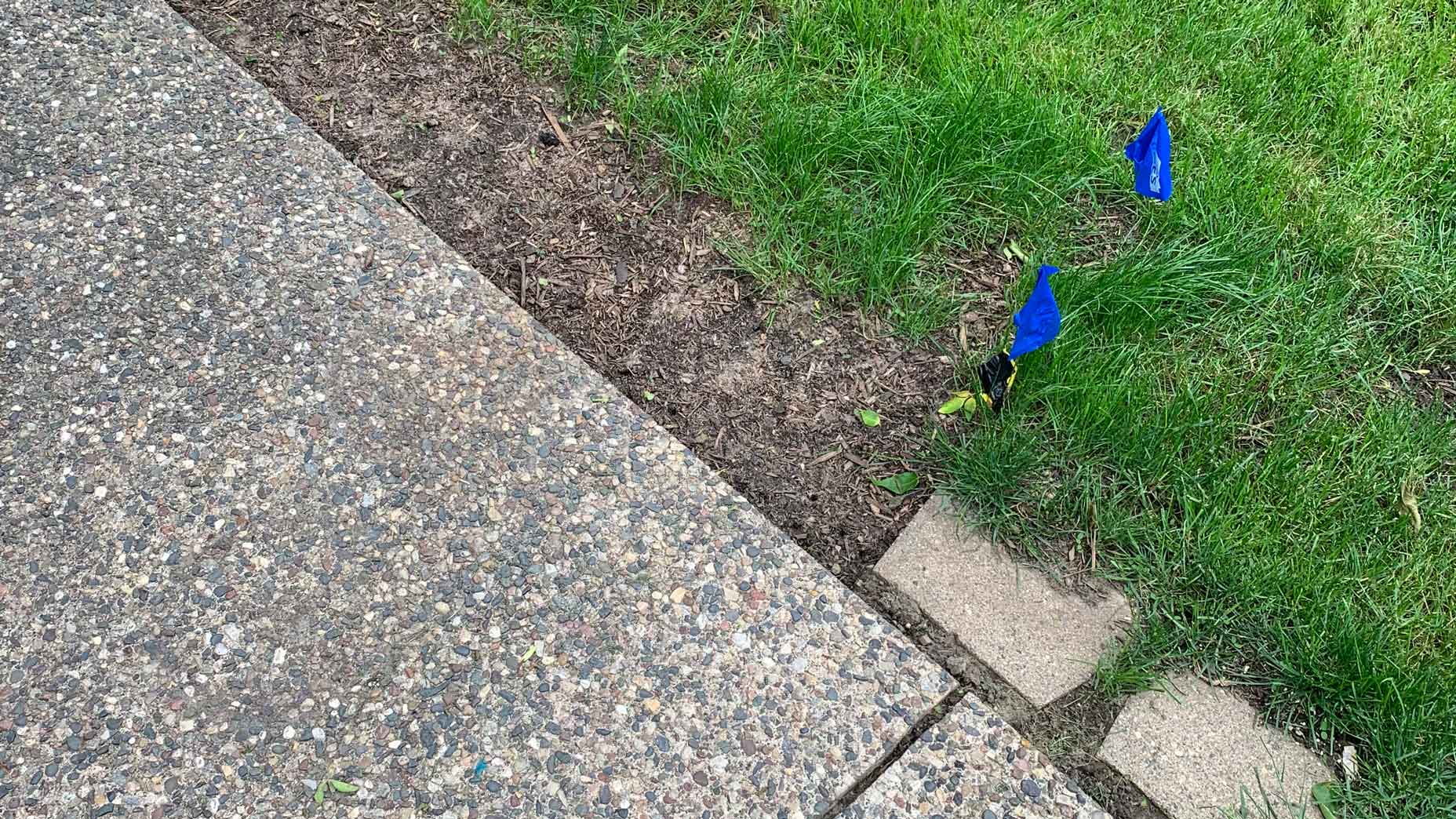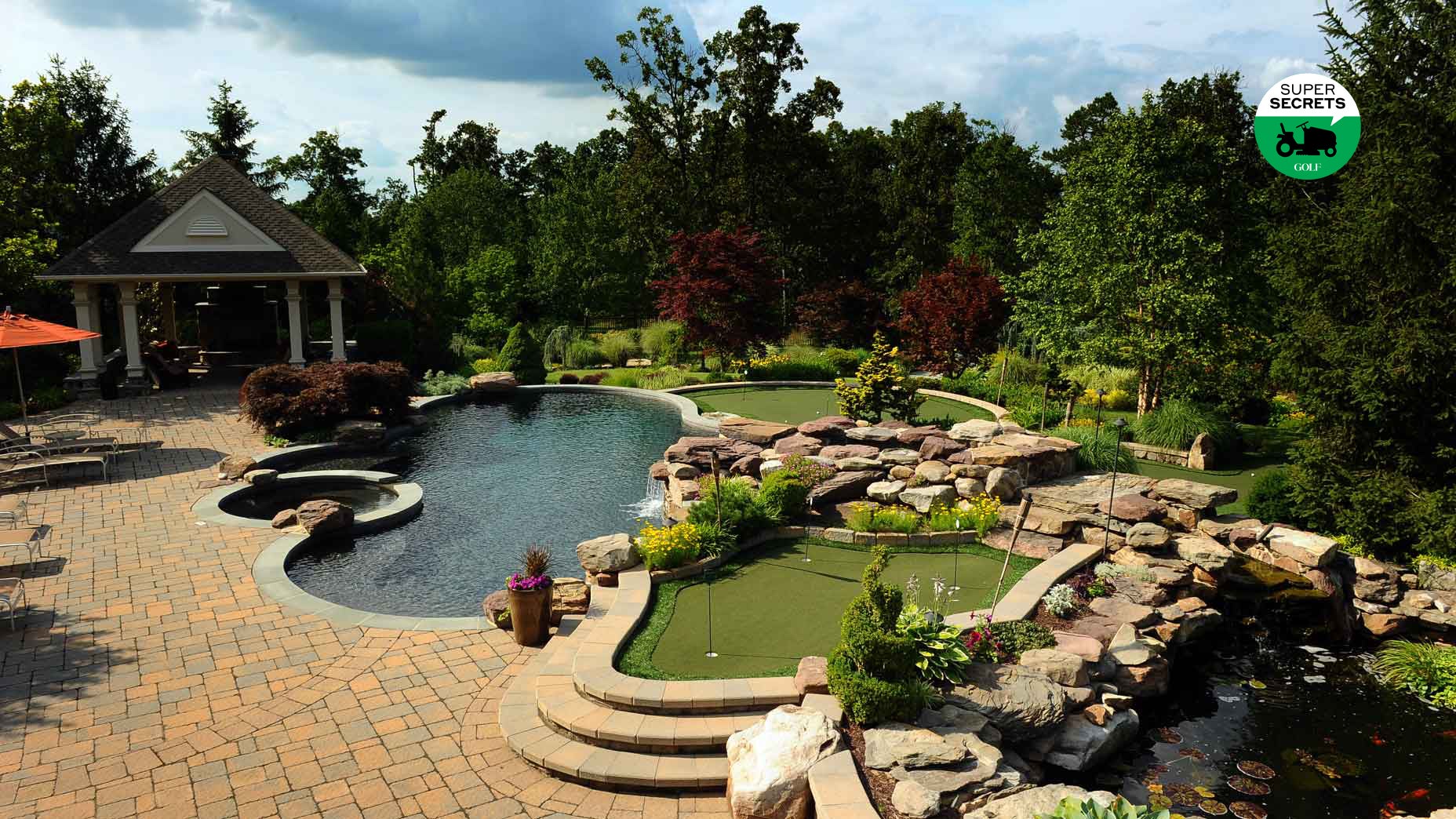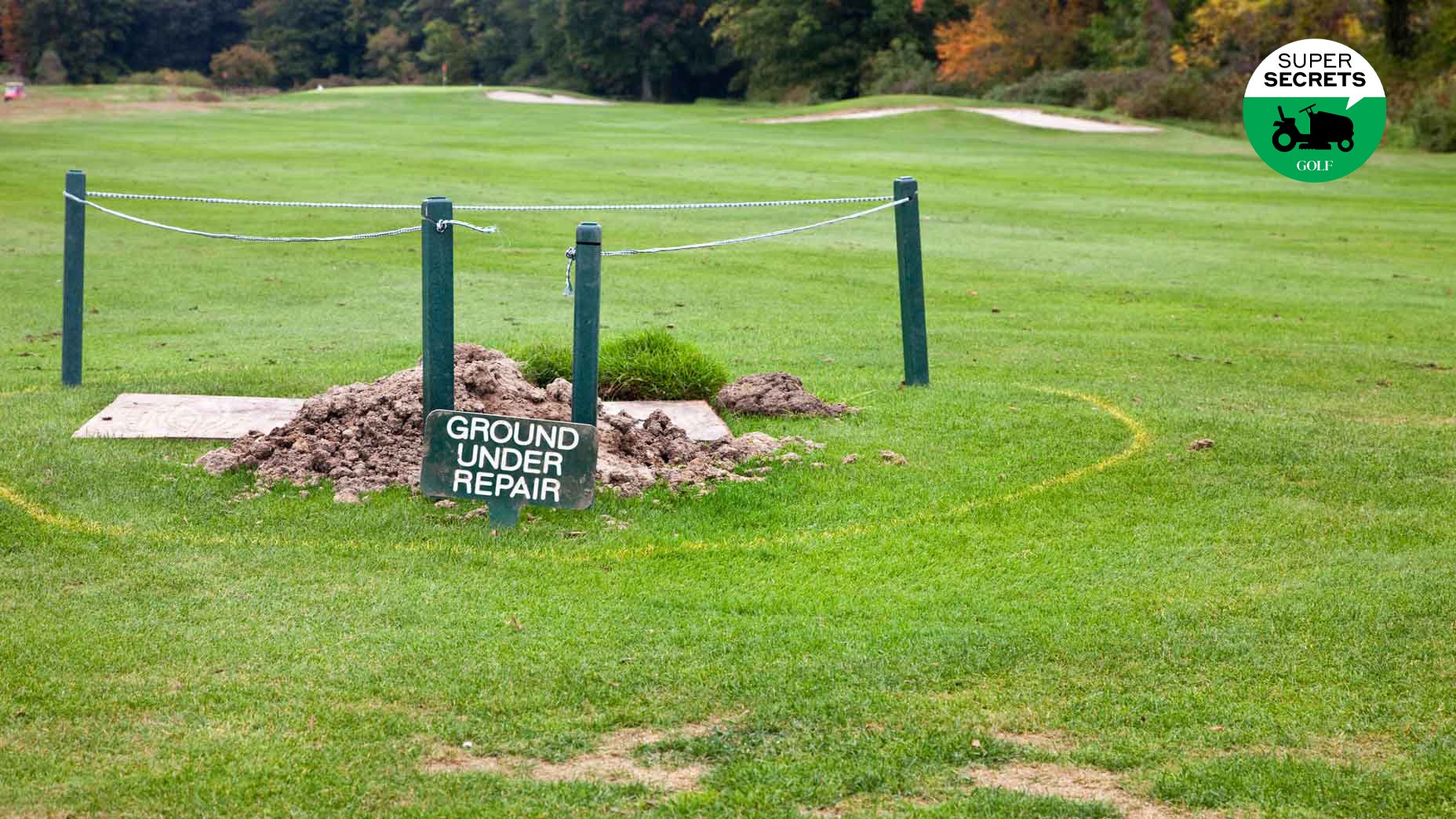Welcome to “Super Secrets Solves,” in which a golf-course superintendent doles out advice for real-life lawn-care dilemmas. Have a problem of your own? Drop a line to josh.sens@golf.com, and we might tackle your quandary in a future installment!
Growing grass is like playing golf. Sometimes you’ve got ask yourself: What am I doing wrong?
A GOLF.com staffer has been wrestling with this question in his own backyard.
Here’s the gist. Early this month, he pulled up several concrete patio slabs behind his Minnesota home and planted grass seeds in their place, hoping to expand the green footprint of his lawn. Before setting down the seeds, he raked the ground to loosen up the soil, then added a layer of top soil for good measure. He then watered the seeds twice a day for three days (once in the morning, once at night) before ramping back to watering once a day. During that time, temperatures were warm but not scorching hot, with one day of heavy rain. The backyard gets plenty of sunlight in the afternoon.
Our hopeful homeowner waited, and waited. But weeks have passed, and the seeds haven’t sprouted. He’s wondering why.
In a search for answers, we turned to Adam Wortman, superintendent at Hart Ranch Golf Club, in Rapid City, S.D, which recently underwent a renovation that involved new seeding of 6.5 acres of rough, fairway and tees. Diagnosing from a distance is challenging, of course. But Wortman, who works in a similar climate to that of Minnesota, knows all about the stumbling blocks that come with seeding. We asked him where he thought things might have gone awry in our staffer’s yard, and what could be done to make them right.
GOLF.com: The first thing we wondered about is compaction. Is it possible the soil was just packed too firm from those concrete slabs for the seeds to take root?
Wortman: I considered that, too. But I don’t think that’s the case here, especially since he raked the ground and put down a layer of top soil as well. With three or four inches of top soil, he should have been good to go. It helps if you get the seeds down into that soil a bit. On the golf course, we’ll use what’s called a Brillion seeder for that. Or we’ll run over them with a knobby tire just so the seeds can’t wash or blow away. You can use almost anything. At home, you can step on the seeds with your tennis shoe and press them down.
GOLF.com: No risk of damaging the seeds when you do that?
Wortman: Nah. Maybe if you went over them repeatedly with a mower. But not by rolling over them or stepping down on them with your tennis shoe.
GOLF.com: If compaction’s not the issue, is it possible he just has bad soil?
Wortman: I don’t think that’s the issue, either. You can see in the picture he’s got grass growing right nearby, and besides, that top soil should have been enough to give the seeds a good growing environment.
GOLF.com: There was a day of heavy rain. Any chance the seeds just got washed away?
Wortman: Washouts happen. But I don’t think that’s the case here. It’s a pretty small area and in the photo, it appears to be pretty flat. It’s not on a slope or anything. The rain might have moved that seed around a bit. But I don’t think it would have washed it all away.

GOLF.com: People often say that the best time to plant grass seed is the fall. Could it be that he was just trying to grow grass at the wrong time of year?
Wortman: I know guys who will seed in the fall. They’ll dormant-seed it and wait til spring and see what comes up and then seed what doesn’t take. My problem with the fall is the nighttime temperatures, especially where I am and where he is. It can get so cold. I prefer to do it in the spring, when the soil and air temperatures start to come up. You need the right temperatures. We’ve had some cold nights and frost lately, and frost is terrible for new seed. You really want to do it when nighttime temperatures are above 50 degrees and ground temperatures are between 55 to 60. That’s optimal. Anything below that and those seeds are just going to sit there.
GOLF.com: The temps were well above that in Minnesota, so seems like we can check that off the list, too.
Wortman: Sounds like it.
GOLF.com: That brings us to watering.
Wortman: It does. That was really the big question I had. Was he keeping that seed bed wet all the time?
GOLF.com: He was watering twice a day. Not enough?
Wortman: I don’t think it was. This can’t be one of those deals where you say, I watered it once before I went to work and then again when I got home. You need to set up a timer. Or have someone water it every couple hours. Light and frequent watering to keep that seed bed wet — if you do that, you’re going to have so much more success. You don’t need the water to be pooling up all around. Just get the top two inches wet, and keep them wet. Once you see the seeds start coming out of the ground, then you can start backing off the watering a bit.
GOLF.com: “Light and frequent.” How often and how much is that?
Wortman: When we seeded for our renovation, we were watering six times a day for about two minutes. In two hours, it would dry out and our sprinklers would come on again. We were religious about it. You’ve got to be. You’ve got to spoon-feed that new seed.
GOLF.com: If he started that kind of watering schedule. Now, is there a chance that seed would still grow?
Wortman: I think there’s a good chance it would. He should give it a try. And when the seeds start to grow, he could see where there are gaps and fill them in.
GOLF.com: How long should he expect it to take?
Wortman: Where he is, in Minnesota, at this time of year, I’d say around 10 days. He should start seeing something coming up.
GOLF.com: And if nothing does, he can try re-seeding?
Wortman: Absolutely.
GOLF.com: And if that fails, the nuclear option, right? He should just sod?
Wortman: Yep. Just lay down a strip a sod. The good thing with that is you don’t have to do the light and frequent watering. Just soak that sod in the morning and again in the afternoon and leave it for the day. You don’t have to baby that sod like you do new seed. New seed is tough.










